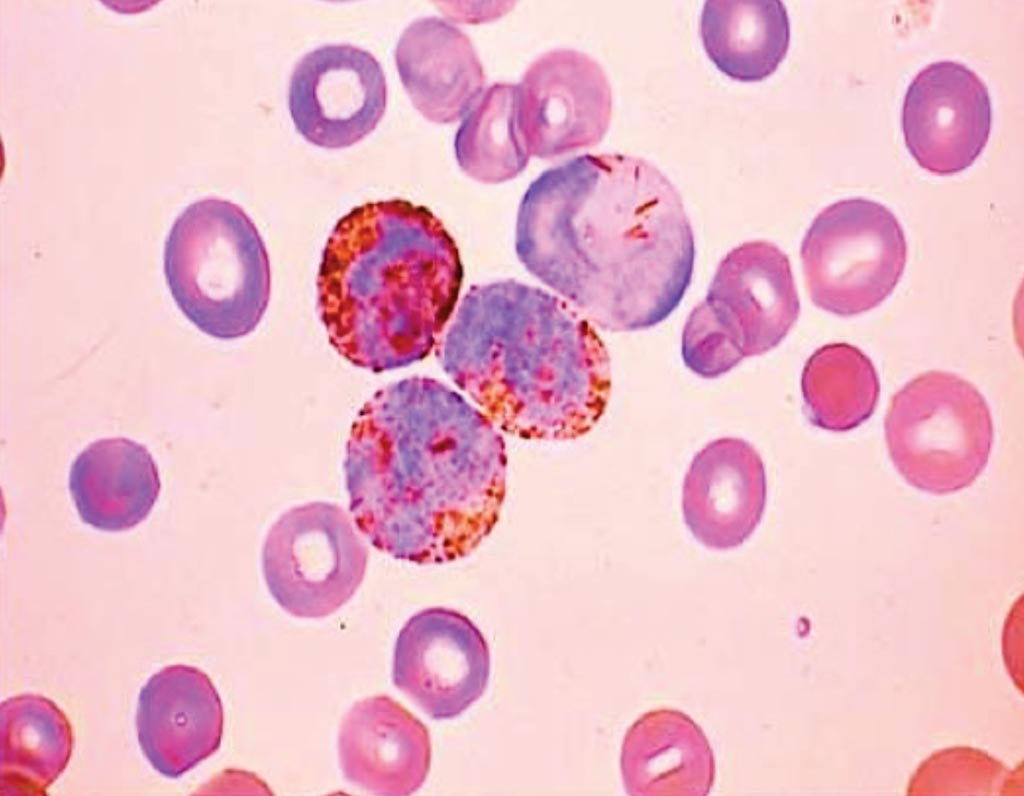Specific Cytokines Are Significant Biomarkers for AML
By LabMedica International staff writers
Posted on 17 Oct 2019
Acute myeloid leukemia is a hematopoietic neoplasm derived from early progenitor myeloid cells; it is characterized by clonal expansion of myeloblasts, which are immature myeloid progenitors that accumulate in the bone marrow (BM).Posted on 17 Oct 2019
Immune system impairment and immunetolerance were reported in patients with acute myeloid leukemia. T cells are the most active part of the immune system, nevertheless they were found to be functionally and numerically defective in acute myeloid leukemia. Interleukin-27 (IL27) and IL35 are regulatory T cells (T-regs) related cytokines; they may be involved in eukemogenesis of acute myeloid leukemia (AML).

Image: Myeloperoxidase positive staining from a patient with acute myeloid leukemia (Photo courtesy of Monika Nema, MD).
Scientists at Sohag University (Sohag, Egypt) recruited 70 newly diagnosed patients with primary AML and 30 matched healthy volunteers. The diagnosis of AML in the patients was made using Leishman-stained peripheral blood smears; Bone marrow (BM) aspirates or occasionally trephine biopsy; Cytochemical staining of BM specimens using myeloperoxidase (MPO), esterase and periodic acid Schiff; and immunophenotyping (IPT): monoclonal antibodies (MoAb) used for staining of blast cells were labeled with fluorescein isothiocyanate, phycoerythrin.
Serum was obtained from plain blood sample tubes that were kept at −80 °C by centrifugation. Serum levels of IL-27 and IL-35 were measured by enzyme-linked immunosorbent assay (ELISA), for both patients and controls, using the commercially available kits. Absorbance was recorded at 495 nm, IL-27 assay range was 31.25–2,000 pg/mL, and IL-35 assay range was 15.63–1,000 pg/mL. The median age of the study patients was 36 years and the range was 18–80 years. Females comprised 52.9% of the patient group.
The scientists reported that significantly higher levels of IL27 and IL35 in AML patients compared with the control subjects, with median values of 77 and 51 pg/mL compared to 37 and 22.2 pg/mL, respectively. The correlations between serum levels of IL27 and IL3 in AML patients, revealed a significant positive correlation between IL27 with, white blood cell (WBCs) count, peripheral blasts percent and myeloperoxidase (MPO) positivity. However, IL35 levels showed a significant negative correlation with platelets count and significant positive correlations with age, CD45, HLA-DR and CD34.
The authors concluded that their study demonstrated that IL27 and IL35 could identify AML patients from healthy subjects, and their overexpression denotes poor prognosis. Based on the simplicity and wide availability of their detection technique they recommended the inclusion of IL27 and IL35 in the diagnostic/prognostic workup of AML. The study was published on October 1, 2019, in the Journal of Blood Medicine.
Related Links:
Sohag University













